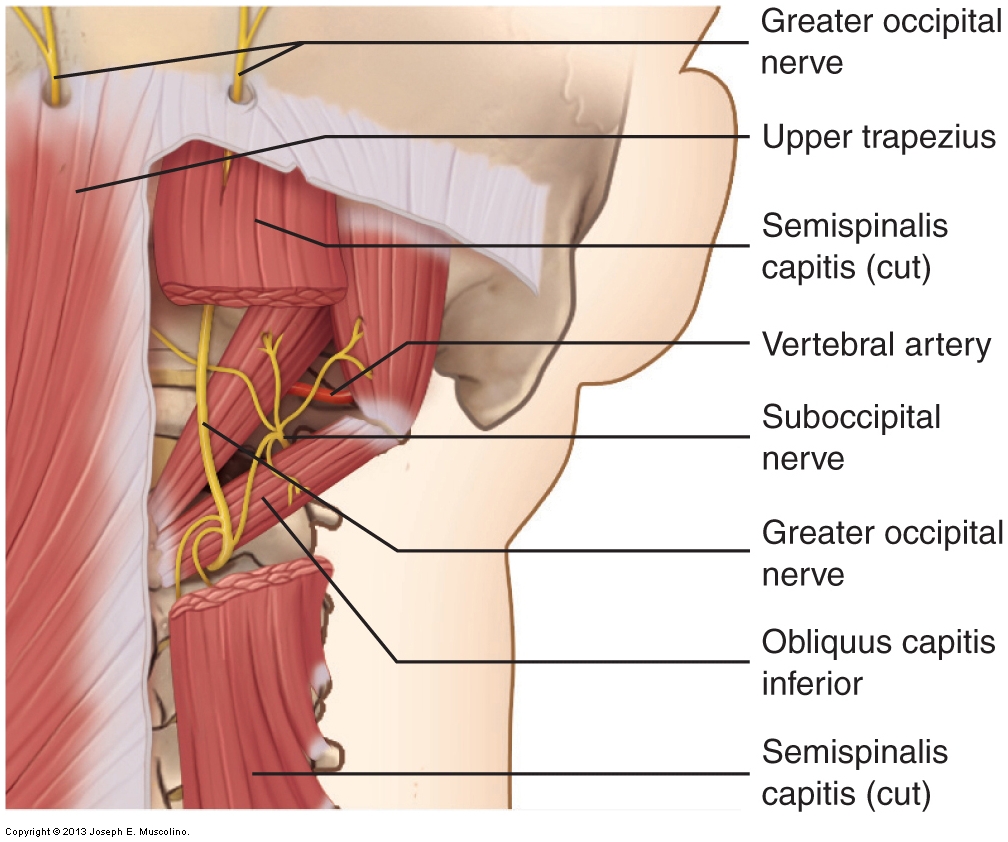Greater occipital neuralgia is a condition in which the greater occipital nerve is compressed, referring pain and/or paresthesia (altered sensation) to the posterior region of the scalp.
Note: “neur” = nerve; “algia” = pain. Therefore, neuralgia literally means “nerve pain.”

Figure 24. Greater occipital nerve. The greater occipital nerve travels between the obliquus capitis inferior and semispinalis capitis and then pierces the semispinalis capitis and upper trapezius muscle near their occipital attachments. Courtesy of Joseph E. Muscolino.
The greater occipital nerve is a branch of the C2 spinal nerve that is located between the obliquus capitis inferior and semispinalis capitis muscles, in the suboccipital region of the neck.
It pierces both the semispinalis capitis and the upper trapezius near their occipital attachments, emerging subcutaneously and then traveling to the posterior scalp (Fig. 24). If the semispinalis capitis, upper trapezius, or obliquus capitis inferior is tight, the greater occipital nerve can be compressed, causing sensory symptoms in the back of the head. If these symptoms involve pain, then greater occipital neuralgia would be the cause of headache, technically described as cephalgia (which is Latin for “head-pain,” in other words, headache).
Note: Treatment Considerations in Brief for Greater Occipital Neuralgia
Massage, stretching, and moist heat all help to loosen and relax the tight musculature that causes greater occipital neuralgia. To the degree that this musculature is tight due to other factors, such as joint dysfunction and/or larger postural distortion patterns (such as forward head posture, usually part of the larger dysfunctional pattern known as upper crossed syndrome), these other factors must be addressed for meaningful and lasting healing to occur.
Of course, with any treatment to the neck, there are always precautions and contraindications to consider.
Note: This blog post article is the tenth in a series of 10 posts on
Common Musculoskeletal* Conditions of the Neck
The 10 Blog Posts in this Series are:
- Fascial Adhesions (and an introduction to musculoskeletal conditions of the neck)
- Hypertonic (tight) musculature
- Joint dysfunction
- Sprains and strains
- Pathologic disc conditions
- Osteoarthritis (OA)
- Thoracic outlet syndrome (TOS)
- Forward head posture
- Tension headaches
- Greater occipital neuralgia
(*perhaps a better term is “neuro-myo-fascio-skeletal”)


